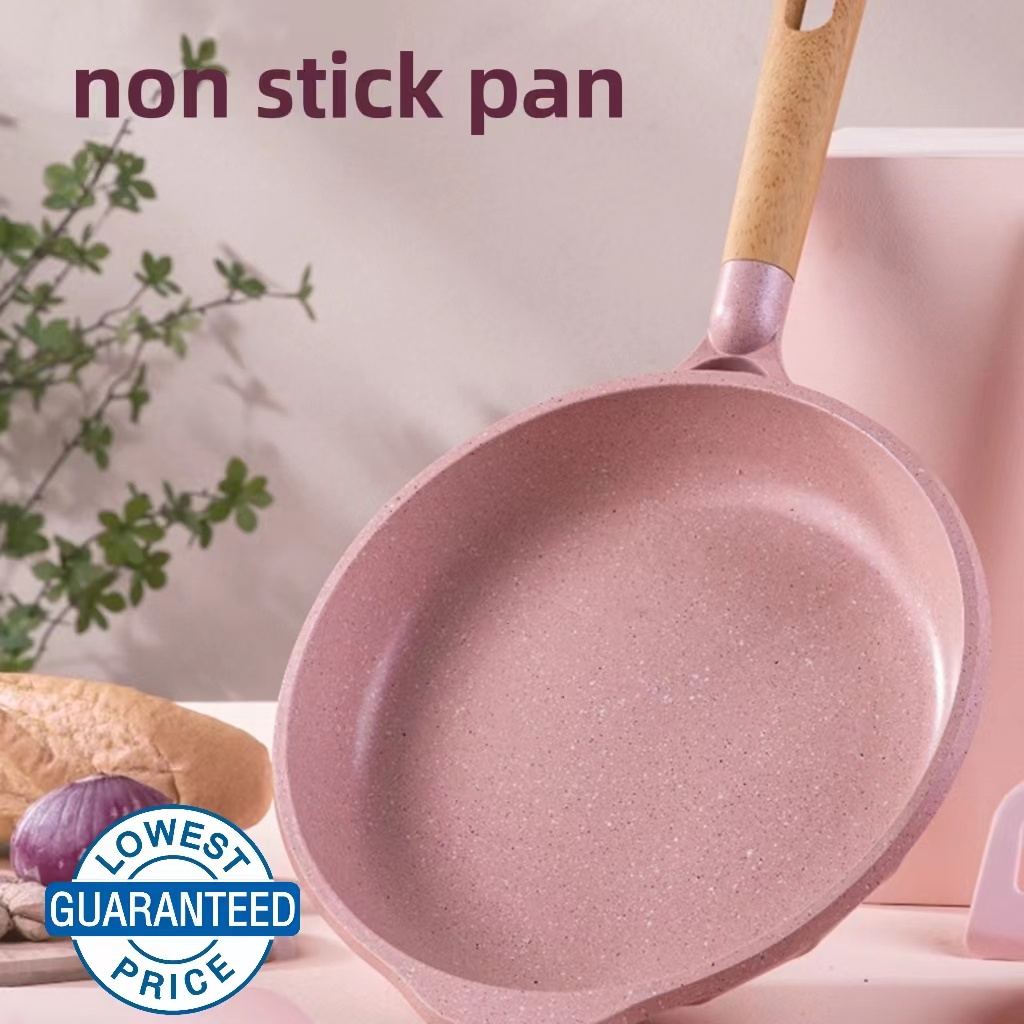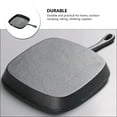Alright folks, let’s talk about something that’s near and dear to every foodie’s heart—cooking the perfect steak. Whether you’re a seasoned chef or just starting out in the kitchen, cooking steak in a non-stick pan can be a game-changer. Gone are the days of charred, stuck-on messes that ruin your cooking vibe. With the right techniques, you can achieve restaurant-quality results right in your own kitchen.
Cooking steak doesn’t have to be intimidating. In fact, it’s one of the simplest and most satisfying dishes you can make. All you need is a good-quality steak, a non-stick pan, and a bit of know-how. The best part? You don’t need fancy equipment or a professional-grade kitchen to pull it off. This guide will walk you through every step, from selecting the perfect cut to serving up a juicy masterpiece.
Let’s be real—steak is one of those meals that makes you feel like you’ve accomplished something special. And when you cook it in a non-stick pan, you’re not only saving time but also preserving the flavor and texture of your steak. So, grab your apron, roll up your sleeves, and let’s dive into the world of sizzling steaks!
Why Choose a Non-Stick Pan for Steak?
Now, you might be wondering, “Why use a non-stick pan for steak when everyone says cast iron is the way to go?” Well, hear me out. While cast iron pans are great for searing, they can be heavy, require seasoning, and aren’t always practical for everyday cooking. A non-stick pan, on the other hand, is lightweight, easy to clean, and perfect for beginners who want to avoid the hassle of stuck-on food.
Here’s why a non-stick pan is your new best friend:
- No sticking or tearing of the steak
- Easy cleanup with just soap and water
- Great for smaller portions without overcrowding
- Ideal for cooks who want consistent results without the learning curve
So, if you’ve been hesitant to try cooking steak because of all the “rules,” let me assure you—a non-stick pan is your secret weapon. Let’s move on to the juicy details!
Selecting the Perfect Steak Cut
Choosing the right cut of steak is like picking the right partner—it’s all about compatibility. Not all cuts are created equal, and some are better suited for cooking in a non-stick pan than others. Here’s a quick breakdown of the most popular cuts and why they work:
Top Sirloin
This cut is lean, flavorful, and budget-friendly. It’s perfect for those who want a steak that’s packed with flavor without breaking the bank. Just be sure to marinate it for a few hours before cooking to keep it tender.
Ribeye
For the ultimate indulgence, ribeye is the way to go. It’s rich in marbling, which means it’s incredibly juicy and flavorful. The only downside? It’s a bit pricier, but trust me, it’s worth it.
New York Strip
If you’re looking for a balance between flavor and tenderness, the New York Strip is your go-to cut. It’s got a nice texture and a bold beefy taste that’s hard to resist.
Pro tip: Always buy steaks that are at least 1-inch thick. This ensures they’ll cook evenly and retain their juiciness. And don’t forget to let your steak sit at room temperature for about 30 minutes before cooking. This helps it cook more evenly.
Essential Tools for Cooking Steak
Before we dive into the cooking process, let’s talk about the tools you’ll need. You don’t need a lot of fancy gadgets, but having the right basics can make all the difference. Here’s what you’ll need:
- A good-quality non-stick pan (duh!)
- Tongs for flipping the steak
- A meat thermometer to check doneness
- Olive oil or butter for searing
- Your favorite seasonings (salt, pepper, garlic powder, etc.)
See? Nothing too complicated. Now that we’ve got our tools in place, let’s move on to the cooking process!
Step-by-Step Guide to Cooking Steak in a Non-Stick Pan
Cooking steak in a non-stick pan is easier than you think. Follow these simple steps, and you’ll have a perfectly cooked steak in no time:
Step 1: Prep Your Steak
Take your steak out of the fridge and let it sit at room temperature for about 30 minutes. Pat it dry with paper towels to remove excess moisture. This helps create a nice sear. Then, season it generously with salt, pepper, and any other spices you like.
Step 2: Heat Your Pan
Place your non-stick pan on medium-high heat and let it heat up for a few minutes. Add a tablespoon of olive oil or butter to the pan and swirl it around to coat the surface.
Step 3: Cook the Steak
Once the pan is hot, place your steak in the pan. You should hear a nice sizzle. Cook it for about 3-4 minutes on one side, then flip it with tongs and cook for another 3-4 minutes on the other side. For medium-rare, aim for an internal temperature of 130°F (54°C).
Step 4: Rest Your Steak
After cooking, remove the steak from the pan and let it rest on a cutting board for about 5 minutes. This allows the juices to redistribute, making your steak even juicier.
Step 5: Serve and Enjoy!
Slice your steak against the grain and serve it with your favorite sides. Whether it’s roasted veggies, mashed potatoes, or a simple salad, your steak is sure to be the star of the show.
Tips for Achieving the Perfect Sear
A good sear is what makes a steak truly special. Here are some tips to help you achieve that perfect crust:
- Use high smoke-point oils like avocado or grapeseed oil for searing.
- Don’t overcrowd the pan—cook one steak at a time if necessary.
- Resist the urge to move the steak around too much while cooking. Let it sit and develop that beautiful crust.
And remember, patience is key. A good sear takes time, so don’t rush the process.
Common Mistakes to Avoid
Even the best cooks make mistakes sometimes. Here are a few common pitfalls to watch out for:
- Cooking a cold steak straight from the fridge
- Overcrowding the pan, which leads to steaming instead of searing
- Flipping the steak too often, which prevents a good sear
- Not letting the steak rest after cooking
Avoid these mistakes, and you’ll be well on your way to steak perfection.
How to Tell When Your Steak is Done
Knowing when your steak is done is crucial. While some people rely on the “touch test,” the most accurate method is using a meat thermometer. Here’s a quick guide to internal temperatures:
- Rare: 120-125°F (49-52°C)
- Medium-Rare: 130-135°F (54-57°C)
- Medium: 140-145°F (60-63°C)
- Medium-Well: 150-155°F (66-68°C)
- Well-Done: 160°F (71°C) and above
Remember, the steak will continue to cook a bit after you remove it from the pan, so take it out slightly below your desired temperature.
Variations and Additions to Enhance Your Steak
Once you’ve mastered the basics, you can experiment with different flavors and techniques. Here are a few ideas to take your steak to the next level:
Baste with Butter
During the last few minutes of cooking, add a pat of butter to the pan and baste the steak with the melted butter using a spoon. This adds richness and flavor.
Add Aromatics
Toss in some garlic cloves, thyme sprigs, or rosemary to the pan while cooking. The aromatics will infuse the steak with delicious flavor.
Experiment with Marinades
Marinating your steak before cooking can add depth and complexity to the flavor. Try a simple marinade of olive oil, soy sauce, garlic, and ginger for an Asian twist.
The possibilities are endless, so don’t be afraid to get creative!
Health Benefits of Eating Steak
Let’s not forget that steak is not only delicious but also packed with nutrients. Here are a few health benefits:
- High in protein, which helps build and repair muscles
- Rich in iron, which is essential for healthy blood
- Contains vitamin B12, which supports brain function
Of course, moderation is key. Pair your steak with plenty of veggies and whole grains for a balanced meal.
Conclusion: Your Steak Journey Starts Here
Cooking steak in a non-stick pan doesn’t have to be intimidating. With the right techniques and a bit of practice, you can achieve restaurant-quality results in your own kitchen. Remember to choose the right cut, prep your steak properly, and follow the steps outlined in this guide.
So, what are you waiting for? Grab that non-stick pan and get cooking! And don’t forget to share your experience with us in the comments below. We’d love to hear about your steak adventures. Happy cooking, folks!


